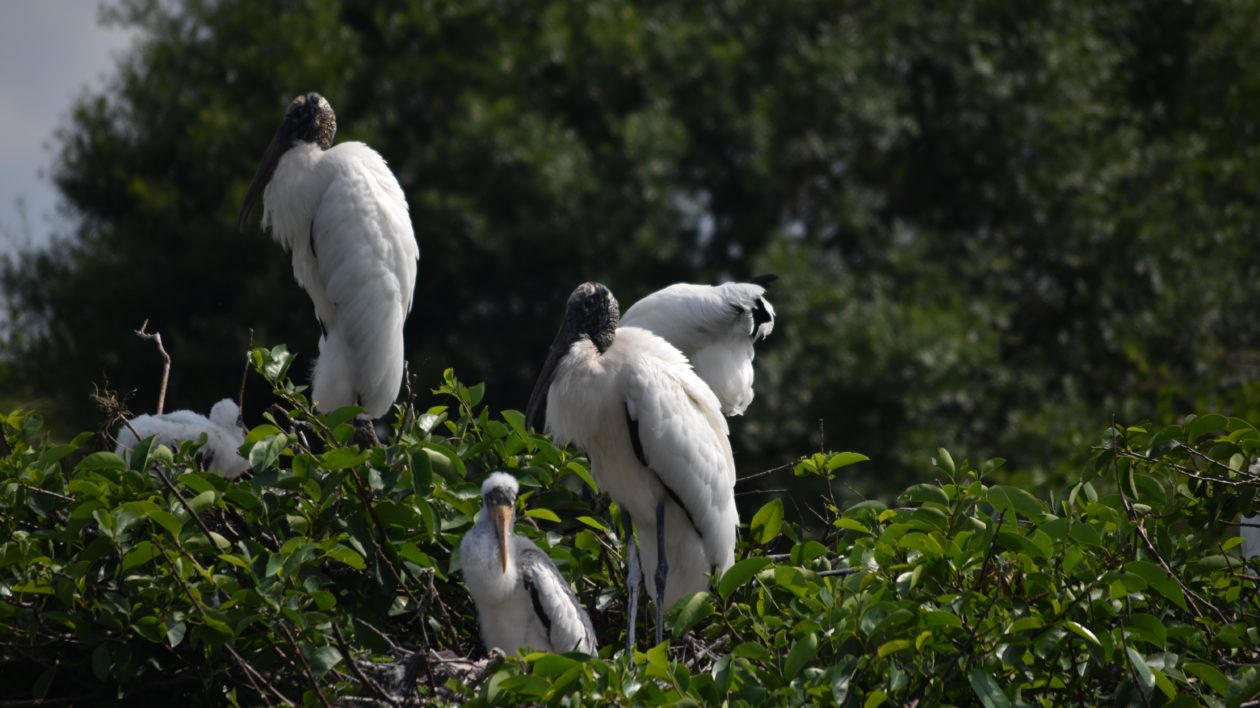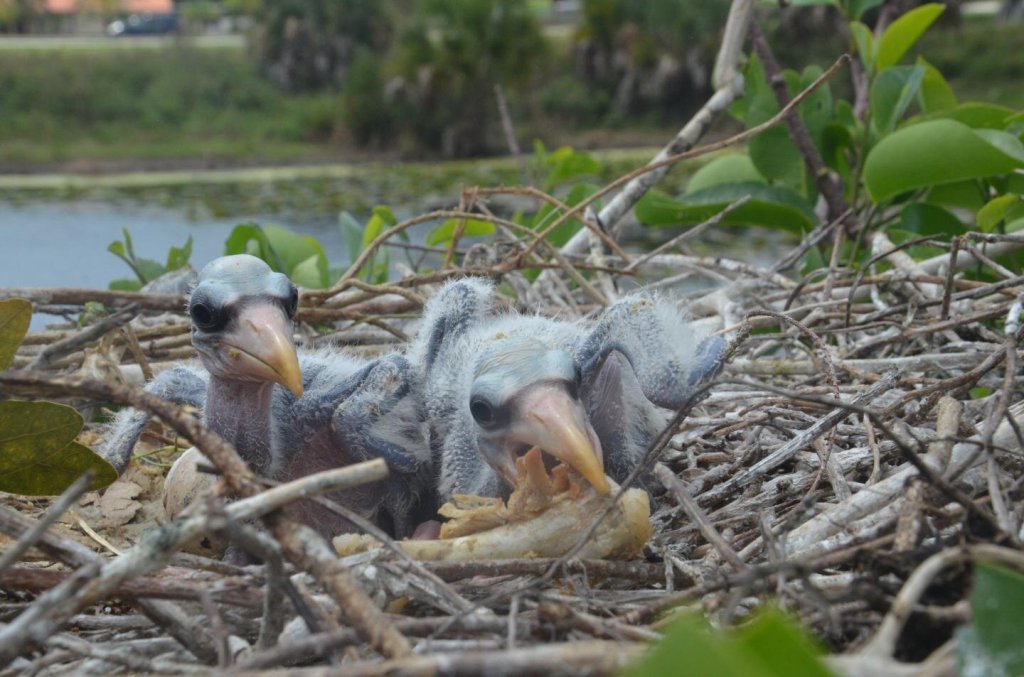Wood storks living near urban areas scavenge human food—including hot dogs and chicken wings—to feed their chicks when marshes are in poor condition. This research suggests that urban environments can act as a buffer for wetland bird species when natural food sources become unpredictable.
The Gist
Scientists from Florida Atlantic University surveyed 160 wood stork nests in south Florida during two nesting seasons. Two-thirds of the nests were located in breeding colonies adjacent to urban areas, while the remaining one-third were in natural wetlands in the Everglades.
Researcher Betsy Evans and her colleagues recorded the number of nestlings and their body condition. They also studied the storks’ diet by collecting the pellets of bones and scales, called boluses, that chicks regurgitate after digesting their meals.
Their results, published in Scientific Reports, show that when conditions are poor, birds near urban areas expand their diets to include frogs, crayfish, and human trash, like pasta, hot dogs, and chicken wings. During optimal conditions, both populations preferred feeding in natural marshes and had similar diets. By utilizing urban habitats, city-dwelling storks produced more chicks during periods of limited natural food resources, without any negative impacts on their health.
The Big Picture
Wood storks are a conservation success story. The species was listed as endangered in 1984, largely due to habitat loss. After three decades of conservation efforts, the population has slowly grown to 6,000 nesting pairs and the birds have been down-listed to threatened status.
As their population recovered, wood storks expanded their range and began nesting closer to urban environments. Wetland birds often travel long distances to find food and have more adaptable diets, making them well suited to exploit urban environments. Evans says the same pattern holds true for other species. For example, European white storks are altering their migration to feed in landfills, while marabou storks in Uganda are breeding earlier due to the availability of human food.
There’s no doubt that urban development negatively affects many species, but some, like the coyote, have learned to thrive alongside people. “An understanding of which species get some benefit from urban areas is important for conservation,” says Evans. “Additionally, it will be critical to have an understanding of the degree of flexibility these species have to adapt to new situations, whether urbanization or a changing climate.”

The Takeaway
For storks and other wetlands species, life in the Everglades follows a boom-and-bust cycle. Their ability to find enough food and breed successfully is tightly linked to the timing of the wet and dry seasons. For storks, conditions are best when the wetlands are drying out, which concentrates fish and other prey in smaller ponds and makes it easier for them to hunt.
“What we observed in our study is that urban life in some ways makes the ‘bust’ times not so bad,” says Evans. During wetter conditions, urban birds were able to raise more chicks than their wetland counterparts.
“For a bird that is a species of conservation concern, like the wood stork, this can be significant and can make a difference if repeated over decades,” says Evans. Urban areas can provide a buffer to changing environmental conditions, helping to lower the bird’s risk of extinction.
But that doesn’t mean that storks can thrive without natural wetlands. Evans was surprised to discover that urban storks still relied heavily on the natural marshes for food during boom conditions. This really highlights the importance of natural wetland restoration,” she says, “specifically the Everglades.” Dumpster diving may help during hard times, but wood storks still need healthy wetlands to survive.




Good Article.Very interesting now I won’t about animals I see dumpster diving.
As the possibility of plastics ingestion at landfills is vastly greater than in normal nature, have any research efforts been made to discover if the stomachs of storks look like the horror-travesties of the seabirds so publicized a few years back, dying as chicks and adults from such ingestion?
(Not to mention the other organisms, as large as sperm whales that appear to have ingested plastics sufficient to have been the cause of their early mortality)
Hi Michael, I’m not aware of any studies like this focused specifically on wood storks. It’s definitely a concern, however, for this particular study the researchers didn’t find any differences in health between urban and wetland chicks. Cheers – Justin e